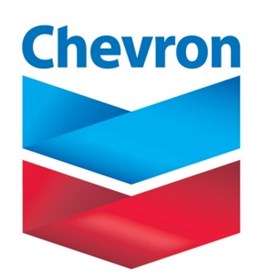(Bloomberg) – Chevron Corp. is reducing local and regional business units in favor of a more centralized model to improve performance and cut as much as $3 billion of costs by 2026.

A single offshore division will operate assets in the U.S. Gulf, Nigeria, Angola and Eastern Mediterranean while shale assets in Texas, Colorado and Argentina will also be brought under one roof, Vice Chairman Mark Nelson said in an interview with Bloomberg Tuesday.
Service centers in Manila and Buenos Aires are set to take on finance, human resources and information technology work that used to be done in multiple countries. Centralized engineering hubs are planned for Houston and Bengaluru, India.
“We’re working so hard to simplify our structure, take some layers out so that we can execute faster,” Nelson said. “Best practices are decided upon and applied across the system regardless of what continent they happen to sit on.”
Low oil prices and an uncertain outlook for fossil fuels have led investors to demand more cash returns from the world’s largest energy companies over the past few years, forcing executives to focus on reducing costs to help fund dividends and share buybacks. Even so, energy stocks now make up just 3.1% of the S&P 500 Index, less than half the weighting a decade ago, despite the US becoming the world’s largest producer of oil and exporter of natural gas.
Chevron has climbed 5.8% this year as of Wednesday midday trading, ahead of the S&P 500 Energy Index’s 3.1% increase and the wider market.
“If we’re going to continue to win and be an investment choice in the market, we have to just always be more effective and look for new ways and better ways to work,” Nelson said.
The changes, which include the oil major’s production and refining divisions, are part of a plan the oil giant announced in February to reduce its global workforce by as much as 20%, or 9,000 employees, by the end of next year. Structural cost savings between $2 billion and $3 billion could be enough to pay one of Chevron’s quarterly dividends. Last month, Bloomberg News reported on several major changes at Chevron’s trading division, which included promoting some traders and offering severance to others.
“These are hard decisions for us to make,” Nelson said. “We don’t take them lightly.” He declined to comment on whether the number of U.S. employees would decrease as a result of the growth of global service centers in Asia and Latin America.
Exxon Mobil Corp. and Shell Plc have or are undergoing similar corporate restructuring and have moved some functions to lower-cost regions.
Until this year, Chevron ran decentralized global operations with powerful country managers leading large divisions with the ability to adapt to local business conditions. But the company has changed significantly in recent years with the acquisitions of PDC Energy Inc. and Noble Energy Inc. in the U.S. and the completion of major projects such as the expansion of the Tengiz oil field in Kazakhstan. Chevron now wants to speed up execution and use more technology while keeping its “local strength,” Nelson said.
Chevron plans to reduce the number of business units in the upstream division to between three and five from about 18 to 20 a few years ago, according to Nelson. The simplified model will optimize drill rig schedules globally rather than regionally and will enable innovations developed in one operations to be rolled out to others quickly, without having to go through layers of management, he added.
“When you standardize and centralize work, it gives you greater opportunity to apply technology,” he said.
Artificial intelligence is already having an impact on Chevron’s downstream operations. At its El Segundo refinery in California, employees are using AI to run mathematical models that determine the optimal mix of petroleum products to maximize revenue.
“It doesn’t take a day to run it,” Nelson said. “It takes seconds to run your linear program to figure out what’s the best product to make, where’s the best place to sell it.”

